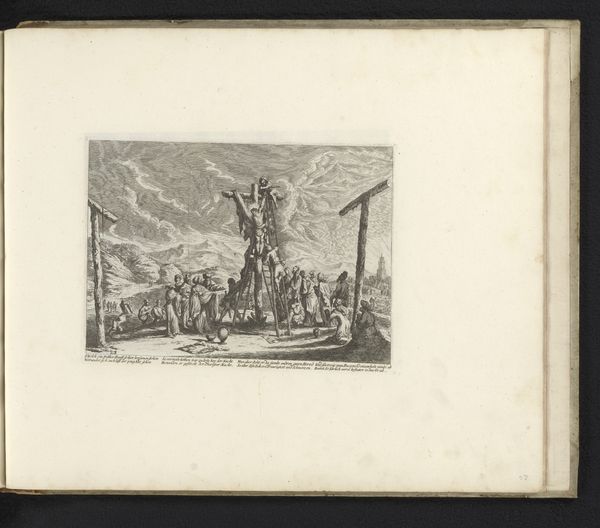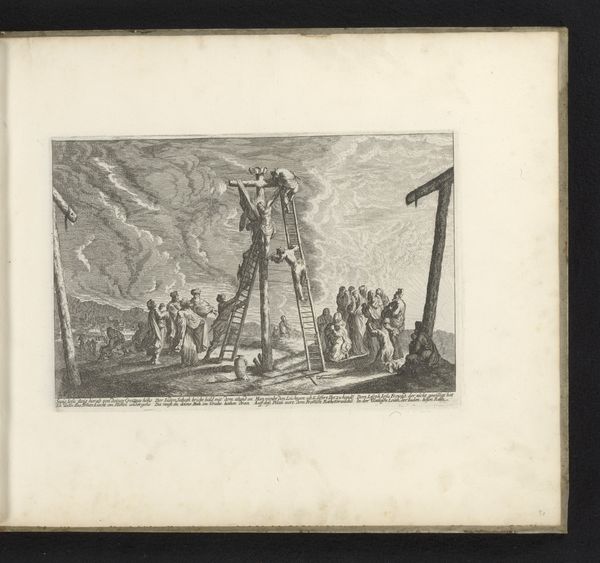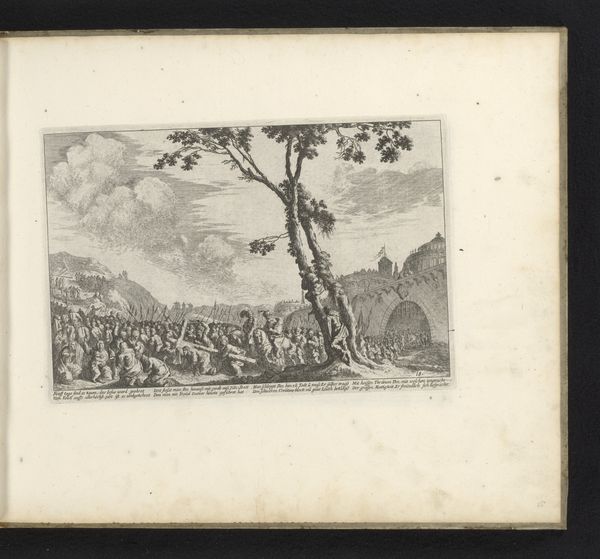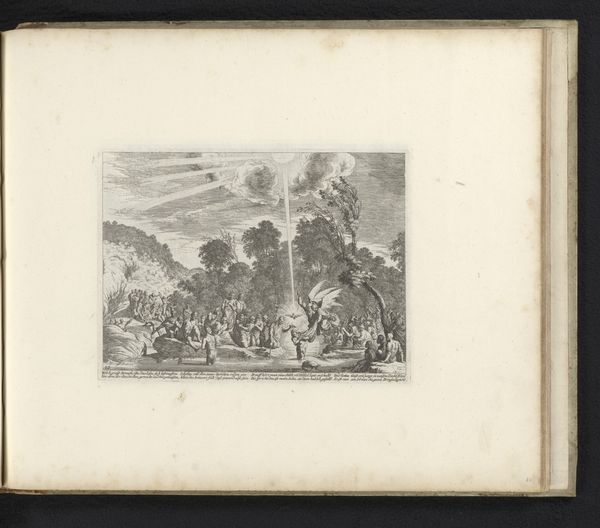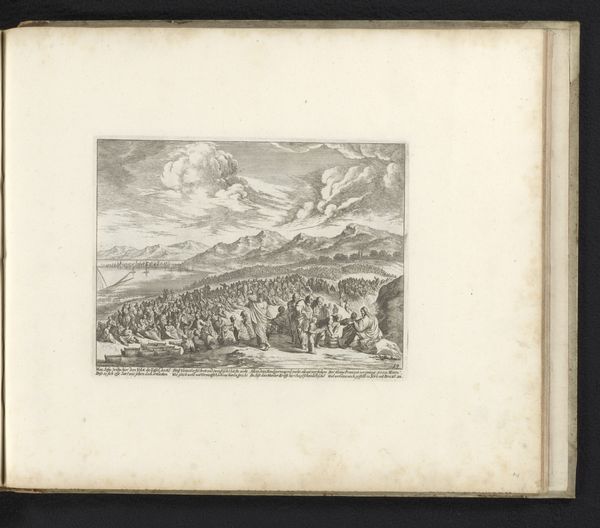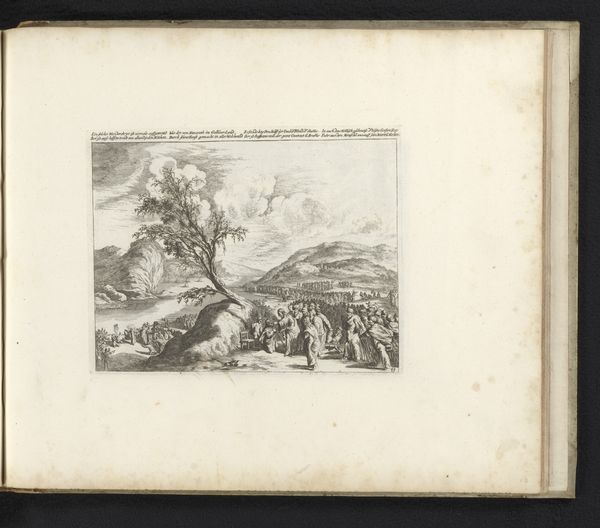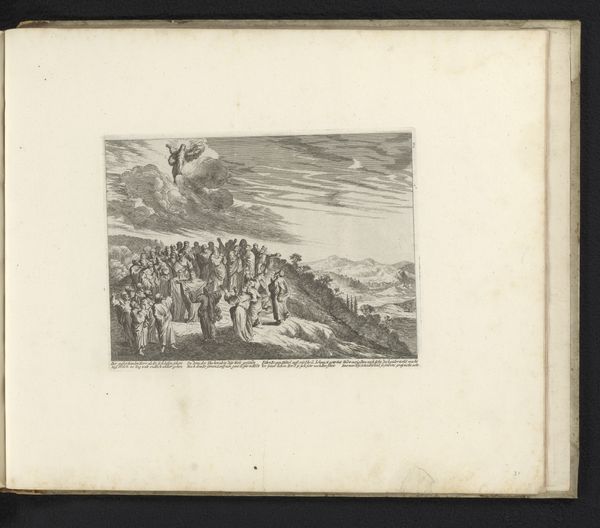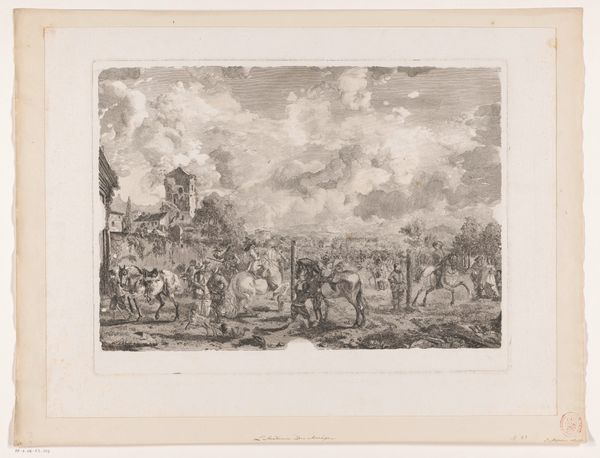
print, pen, engraving
#
baroque
# print
#
figuration
#
pen
#
history-painting
#
engraving
Dimensions: height 174 mm, width 252 mm
Copyright: Rijks Museum: Open Domain
Curator: Welcome. Let’s consider "Kruisiging", a print made between 1670 and 1682 by Melchior Küsel. Executed with pen and engraving techniques, it’s currently held here at the Rijksmuseum. What are your initial thoughts? Editor: Bleak. Absolutely bleak. The sky, the barren ground, the hunched figures… the overall impression is one of profound grief and despair. The towering crosses emphasize vulnerability, even though the image itself is small. Curator: Indeed. Küsel’s work emerged within the Baroque period, a time marked by significant religious and political upheaval, including the aftermath of the Thirty Years' War. It’s not merely a biblical depiction, but also reflects the suffering prevalent in the German territories of the period, using religious narrative to represent broader social devastation. Editor: You're right, I sense that context so strongly here! The iconographic choices definitely reinforce that message. Notice how Küsel portrays Christ’s crucifixion alongside those of the two thieves. Instead of the traditional central focus solely on Christ, he emphasizes the broader, collective suffering. And that stark, almost aggressively visible sun--what does it signify here, a cold witness, a failed divine promise? Curator: A good question, especially considering the political anxieties of the period and perhaps even challenges to the role of religion itself, represented here as ineffectual. Artists in the 17th century grappled with these anxieties within the institutions of art-making and patronage. There was widespread discussion, both secular and religious, of the moral obligation to relieve suffering and it was artists who played an instrumental role in communicating these ideas visually. Editor: So the image almost dares the viewer to look away from all the people at the base of the cross, consumed by raw emotions that mirror a broader societal breakdown. Even the figures removing Christ from the cross on horseback…a jarring visual element. It deviates significantly from traditional iconography, creating this potent message of universal pain. Curator: Yes, and consider how prints functioned during this period, they are distributed and replicated on a massive scale making them very efficient communication devices. It allows people to connect to larger discourses on faith, governance, and personal responsibilities and enables broader public awareness and conversation around ideas during the period. Editor: The way he handles light and shadow is very skillful. There are barely any joyful bright spots and instead only pockets of grief and sorrow. It's incredibly powerful and tragic. Curator: Exactly, and considering the historical and social context, Küsel seems less interested in glorifying divine salvation than with confronting the shared experience of human misery and social inequity. Editor: Looking closer, this is so meticulously rendered, every etching reinforces the scene’s emotional intensity. The piece speaks volumes about human sorrow and existential struggles. Curator: This particular piece challenges us to think critically about how social upheavals can infiltrate and reshape artistic representation, and vice-versa. It's truly haunting to consider.
Comments
No comments
Be the first to comment and join the conversation on the ultimate creative platform.

